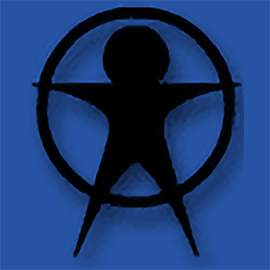North America/United States of America/South Carolina/Charleston/College of Charleston/
College of Charleston
- Location & Contact Information
- Address, Directions, & Map:
- 66 George Street, Charleston, South Carolina, United States of America
- Telephone Numbers: 843-953-7661
- Official Website:[2]
- Address, Directions, & Map:
- History & Memorable Moments
Founded in 1770 and chartered in 1785, the College of Charleston is the oldest institution of higher education in South Carolina, and the 13th oldest in the United States. During the colonial period, wealthy families sent their sons abroad for higher education. By the mid-18th century, many leading citizens supported the idea of establishing an institution of higher learning within the state. On January 30, 1770, Lieutenant Governor William Bull recommended to the colony’s general assembly the establishment of provincial college. However, internal disagreements, political rivalries, and the American Revolution delayed its progress. After the war, South Carolinians returned their attention to establishing a college. On March 19, 1785, the College of Charleston was chartered to “encourage and institute youth in the several branches of liberal education.” Several of the College’s founders played key roles in the American Revolution and in the creation of the new republic. Three were signers of the Declaration of Independence and another three were framers of the U.S. Constitution. Other founders were past, present and future federal and state lawmakers and judges, state governors, diplomats, and Charleston councilmen and mayors. Robert Smith served as the College’s first president. Educated in England, he was ordained as a priest in the Anglican Church and relocated to Charleston, where he served as rector of St. Philip’s Church. During the American Revolution, he supported the patriot cause and even served as a soldier during the siege of the city. He later became the first Episcopal bishop of South Carolina. [1]
The first classes were held on the ground floor of Reverend Smith’s home on Glebe Street (now the residence for College of Charleston presidents). Later, rooms for the College were fashioned out of an old military barracks located on public land at Charleston’s western edge. Instruction began there in January 1790. The College graduated its first class in 1794, which consisted of six students. By 1824, the College offered a curriculum broad enough to regularly grant degrees. During Reverend Jasper Adams’ tenure as president, he reorganized the College and orchestrated the construction of the first building specifically designed for teaching – today’s Randolph Hall. In 1837, the College became the nation’s first municipal college when the City of Charleston assumed responsibility for its support. The city provided funds, for example, in 1850 to enlarge the main academic building (Randolph Hall), to construct Porters Lodge, and to fence in the Cistern yard, the block that is still the core of the campus. It remained a municipal college until the 1950s, when the College again became a private institution. [1]
During the Civil War, many students and faculty left to serve the Confederacy. Despite dwindling student numbers and a long-running siege of the city by Federal troops, there was no suspension of classes until December 19, 1864, two months before the city was evacuated. Classes resumed on February 1, 1866, and over the next four decades, the College weathered several financial crises, Reconstruction, hurricanes, and the devastating earthquake of 1886. Until the twentieth century, students who attended the College were primarily Charlestonians. [1]
Harrison Randolph (president, 1897–1945) changed that by building residence halls and creating scholarships to attract students from other parts of the state. Under President Randolph, women were admitted to the College and the enrollment increased from just 68 students in 1905 to more than 400 in 1935. For many institutions of higher education across the South, integration took place in the late 1960s. For the College, the first black students enrolled in 1967. The enrollment remained at about 500 until the College became a state institution in 1970. During Theodore Stern’s presidency (1968–1979), the number of students increased to about 5,000 and the physical facilities expanded from fewer than 10 buildings to more than 100. Between 1979 and 2001, the enrollment continued to increase, climbing to more than 10,000, and attracting students from across the country and around the world. [1]
- Overview, Photographs, & Video Links
Prospective Students
- Admissions Tips
New & Current Students
- Campus Events
- Transportation
- Safety Tips
- Support Centers
- Counseling
- Grading System
- Good Classes & Teachers
- Groups & Organizations
- College & Career Tips
Alumni
- Benefits of Joining Alumni Association
- Mailing List Directory
- Chapters
- Teachers (Where are they now?)
- Huber, Brad Richard (July 1989 - Present)
- Alumni Directory
- Alumni Events
Visitors
- Hotels Nearby
- Restaurant Recommendations
- Places of Worship
- Sports Facility Access

